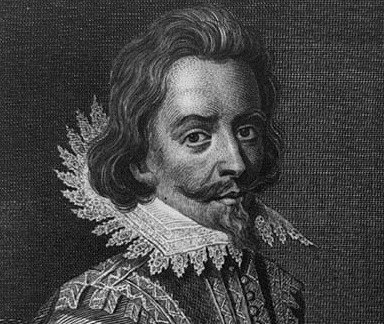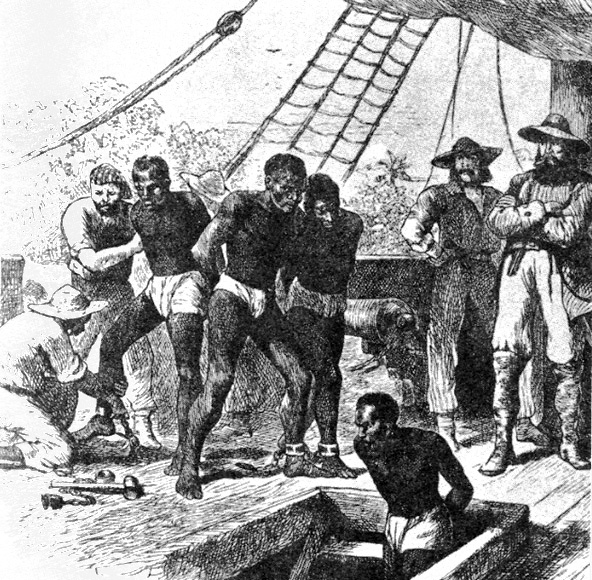After having been traded for food and supplies, the first slaves arrived in 1619 in
Virginia Colony. The Congressional government (when it finally came into being) would not regulate slavery until
1787 with the
Northwest Ordinance. Before then, slave policy had been regulated by individual colonies, like Georgia and Virginia. The Northwest Ordinance created the
Northwest Territories in the Ohio River Valley + the Great Lakes area. It also banned slavery there, becoming the first act of the US government against slavery. (However, indentured servitude was still legal, and some people illegally kept their slaves anyways.)
Slaves working in Virginia Colony
In
1803, the
Louisiana Purchase was acquired by president
Thomas Jefferson. This addition more than doubled the size of the United States, and people eagerly began moving westward. People migrated mostly along horizontal lines; this meant that people from the South would move into western regions still in the southern part of the country, and people from the North moved into regions in the northern part of the country. By
1819, all the Northern states (thus far) had abolished slavery, but not so in the South. Thus as Southerners moved westward in search of new land, they carried slavery with them.
Butter yellow color is Louisiana Purchase, peachy-tan is the color of the USA before that.
Darker hot chocolate brown belongs to other countries, like Spain and UK.
The Southern economy was highly agricultural, while the North's was working its way to becoming the industrial powerhouse of the nation. With the invention of the
cotton gin by
Eli Whitney and its introduction into the market in the late 1790's, cotton production because easier and cheaper. Since the crop was so profitable, the South started devoting more land to cotton, and brought over more slaves from Africa to pick it. As time went on, the South built a society structured on the
plantation system that was highly dependent on agriculture, and the existence of slavery. The North becomes
industrialized, and slavery is thrown out the window.
Abolitionism grew out of the North, and would begin to pose a threat to the Southern system as time went on.
Slave traders loading slaves into harsh and cruel ships
In
1807, Congress abolishes US involvement in the
international slave trade. Around this time, and even before and after it, states with large slave populations (like
South Carolina) would make increasingly harsh and restrictive rules against slaves and black people. They felt threatened by the closing of the international slave trade for the US, and by slave rebellions in the US, as well as a successful one in
Haiti where the slaves rose up and killed the French, and essentially kicked them out and formed their own country.
In
1819,
Missouri was to become a state. Since there was an equal number of slave states and free states, people from both sides each wanted Missouri to have a slavery policy that would fit their ideas, so that they could have more power in
Congress. The South was a minority in the
House of Representatives, so they wanted to protect their power in the
Senate. They also wanted to protect their way of life, and felt that since slaves were their legal property, Congress couldn't and shouldn't make laws against that. Northerners and abolitionists disagreed and wanted Missouri to be a free state.
Maine was also in line to become a state during this time.
The Missouri issue caused much controversy and friction between pro-slavery and anti-slavery forces. In
1820, the
Missouri Compromise was made to remedy it. Key in this compromise was the representative from Kentucky in the HoR (and later the Senate),
Henry Clay. In this compromise, Missouri would be a slave state and Maine would be a free state. It also forbade any slavery anywhere in the USA above the
36th parallel, except at Missouri of course.
Picture unrelated.
Over the next twenty years, the South increased its reliance on agricultural, cotton, and slave labor. As abolitionism and anti-expansion of slavery feelings grew in the North, they felt increasingly on edge and more anxious to protect slavery, which they called the "
peculiar institution." From
1836 - 1844, supporters of slavery had various
gag rules put into action in Congress. These rules prevented/hindered the discussion of slavery in Congress. This was done partly out of a fear that slavery would be threatened and weakened, and partly also because people thought that Congress wouldn't get anything done if they got into an endless argument about slavery. Tensions were mounting, and there was a lot of friction between Northern and Southern interests. The two major political parties, the generally pro-industrialization
Whigs and the generally pro-agriculture
Democrats, started splitting among sectional lines and becoming less and less national in support as time went on.
In
1846, the country becomes involved in the
Mexican-American War.(You can read about that on the preceding blog post.) Since it was possible that we'd get a lot of territory from winning, (which we did) slavery would most certainly have to be dealt with. The
Wilmot Proviso was introduced the year the war started, and it proposed that slavery be banned in any new territory we got from Mexico all together. During this time, a new party called the
Liberty Party came to being, and proposed to abolish slavery from the USA completely, though where it already existed, it would be done away with over time and its proponents would be restricted in their political activities. Since this was a pretty radical stance, the
Free-Soil Party came about, which would just ban slavery in all the territories. In
1848 the war ended, and we got a bunch of land from Mexico. The Democrat
Lewis Cass (who was running for President that year) proposed that
popular sovereignty be used in determining whether or not new states would be slave or free. This idea basically would let the people of a state vote on whether or not they wanted it to allow slavery or not.
In
1850, an agreement was finally reached over what to do with the land gained from the war in the
Mexican Cession. This was the
Compromise of 1850. It drove tensions between North and South way up high, and people were predicting civil war, and "trying their damnedest" to stop it from happening. The South wanted territory open to slavery. Senator
John C. Calhoun, a Southerner and slave owner, argued that Congress had no rights over people's property in the territories. Slaves were property, so they could be taken wherever their owners wished. Abolitionists strongly objected to this, as they always had. The North wanted to suppress slavery, and the South felt threatened and hemmed in by industrial interests from the North. New states could tip the balance of power in the government, so each side wanted more on their own side.
Texas became a slave state, and
California became free. The
Utah and New Mexico Territories both became open to popular sovereignty. A stronger
fugitive slave law was also called for in the 1850 compromise, and it would be enforced. The North was ticked off that they would have to comply, and the South felt that the whole deal wasn't really fair and that this was their only concession. This compromise also repealed the Missouri Compromise, since it opened up land to potentially get slavery that would have been guaranteed slavery-free since it was above the 36th parallel.
In
1854 with the
Kansas-Nebraska Act in which the states were opened to popular sovereignty (so that they could become states so a railroad could go through them), pro and anti-slavery forces clashed and created much violence and bloodshed, as well as political turmoil and pressure. It was pretty much a proxy war between anti-slavery North and pro-slavery South. In
1857 the
Dred Scott Decision, by the
Supreme Court Justice Roger B. Taney, repealed the Missouri Compromise decision (again) from 1820 and said that all territory was legally open to slavery. This case made many people in the North extremely angry, and tensions rose higher and higher. The Whig Party actually died because sectional tension tore it apart, and the
Republican Party rose up, (they originally formed to protest the Kansas-Nebraska Act.) The Democratic Party was also weakened, but did not suffer the fate of the Whigs. In
1859, abolitionist
John Brown, who had fought against pro-slavery people in Kansas earlier, took over an arsenal and tried to lead a
raid on Virginia that was supposed to end with a mass-freeing of the slaves in the whole South. It failed, but the South became extremely disturbed...more so than it was already.
In
1860, Republican
Abraham Lincoln becomes president, and the South is sure its fate is sealed, so they
secede from the
Union and form the
Confederacy. The
Civil War begins shortly after, and goes until
1865.
During the Civil War, African-Americans were used by the Union army (to a small extent, but they were distinguished!) but not by the Confederate Army. Early on, General
Benjamin Butler ordered that all slaves be confiscated and not returned to their masters; they were now "
contraband of war." He had the now former-slaves help work on fortifications for his troops. Later, the Congress would issue orders instructing that the whole Union army to do what Butler was doing, Fugitive Slave Law be damned. President Lincoln in
1863 then enacted the two part
Emancipation Proclamation, which said that slaves in rebelling states were now free, voila! This got him lots of PR points, especially among already free African-Americans and former slaves.
When the Civil War ended in 1865, and the
13th Amendment went through Congress to outlaw slavery and involuntary servitude forever.This is the end of slavery in the USA, hoorah! What happens to the African-Americans, the South, and everyone else after 1865 will be covered in another blog post.
Thanks for reading! ^^















